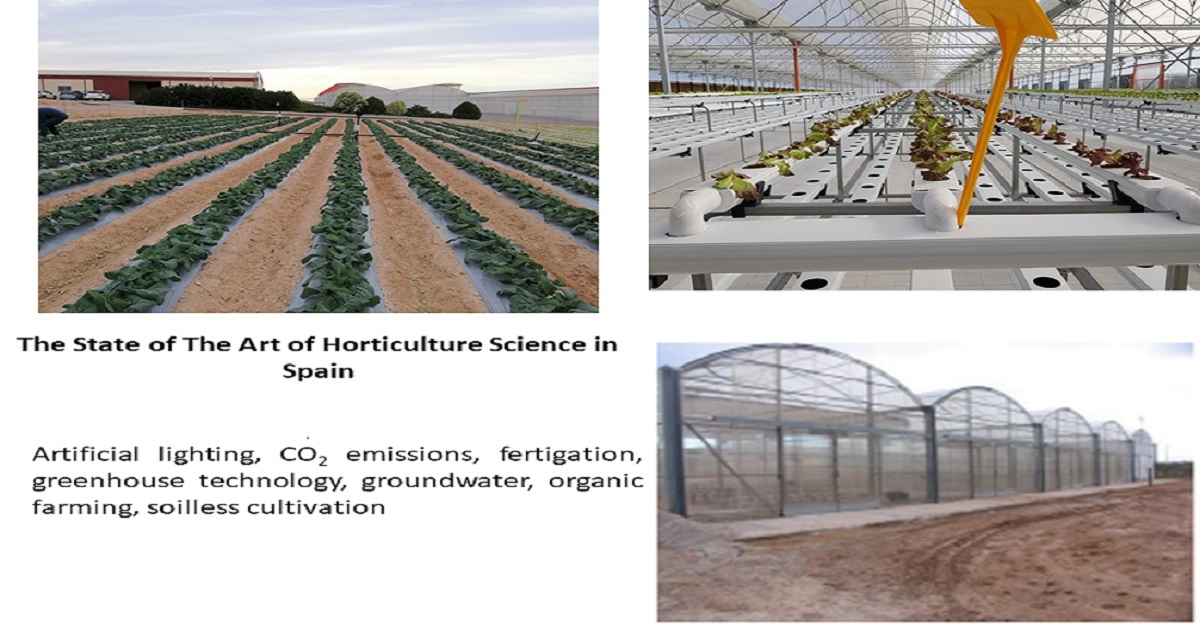The State of The Art of Horticulture Science in Spain
A special issue of Horticulturae (ISSN 2311-7524).
Deadline for manuscript submissions: closed (20 July 2023) | Viewed by 16566

Special Issue Editors
Interests: water relations; aquaporins; secondary metabolism (glucosinolates); membrane proteins and nutrition in plants; crop production under different salinity stress
Special Issues, Collections and Topics in MDPI journals
Interests: phytochemicals; inflammation; obesity; health-centered agri-foods
Special Issues, Collections and Topics in MDPI journals
Special Issue Information
Dear Colleagues,
Spanish horticulture has drastically changed in the 21st century. With 16.9 million hectares of arable land, novel technological advances in horticulture, vegetable production, gardening, and landscaping are now being employed for vegetable and fruit production.
Novel technologies in soilless cultivation systems, fertigation, global microclimatic control of greenhouses, use of renewable energy (e.g., solar, solar thermal, biomass-fired cogeneration, and geothermal), efficient artificial lighting, and lower CO2 emissions have made Spanish agrosystems more competitive.
Other environmental challenges, such as the conversion to productive organic farming, recycling, and composting of horticultural materials, continue to be major challenges to the future of horticultural production in Spain; therefore, it is important to find solutions to increase yields under a climate variety or solutions to enable extensive exploitation of groundwater.
This Special Issue provides an overview of modern Spanish agriculture, particularly focused on these novel technologies.
Prof. Dr. María del Carmen Martínez Ballesta
Dr. Diego A. Moreno
Guest Editors
Manuscript Submission Information
Manuscripts should be submitted online at www.mdpi.com by registering and logging in to this website. Once you are registered, click here to go to the submission form. Manuscripts can be submitted until the deadline. All submissions that pass pre-check are peer-reviewed. Accepted papers will be published continuously in the journal (as soon as accepted) and will be listed together on the special issue website. Research articles, review articles as well as short communications are invited. For planned papers, a title and short abstract (about 250 words) can be sent to the Editorial Office for assessment.
Submitted manuscripts should not have been published previously, nor be under consideration for publication elsewhere (except conference proceedings papers). All manuscripts are thoroughly refereed through a single-blind peer-review process. A guide for authors and other relevant information for submission of manuscripts is available on the Instructions for Authors page. Horticulturae is an international peer-reviewed open access monthly journal published by MDPI.
Please visit the Instructions for Authors page before submitting a manuscript. The Article Processing Charge (APC) for publication in this open access journal is 2200 CHF (Swiss Francs). Submitted papers should be well formatted and use good English. Authors may use MDPI's English editing service prior to publication or during author revisions.
Keywords
- artificial lighting
- CO2 emissions
- fertigation
- greenhouse
- groundwater
- organic farming
- soilless cultivation
Benefits of Publishing in a Special Issue
- Ease of navigation: Grouping papers by topic helps scholars navigate broad scope journals more efficiently.
- Greater discoverability: Special Issues support the reach and impact of scientific research. Articles in Special Issues are more discoverable and cited more frequently.
- Expansion of research network: Special Issues facilitate connections among authors, fostering scientific collaborations.
- External promotion: Articles in Special Issues are often promoted through the journal's social media, increasing their visibility.
- Reprint: MDPI Books provides the opportunity to republish successful Special Issues in book format, both online and in print.
Further information on MDPI's Special Issue policies can be found here.






